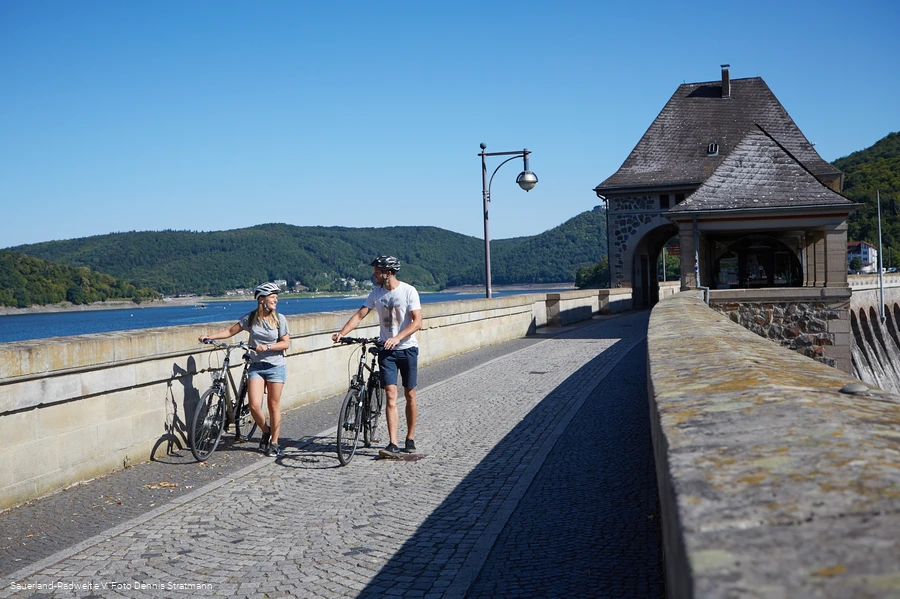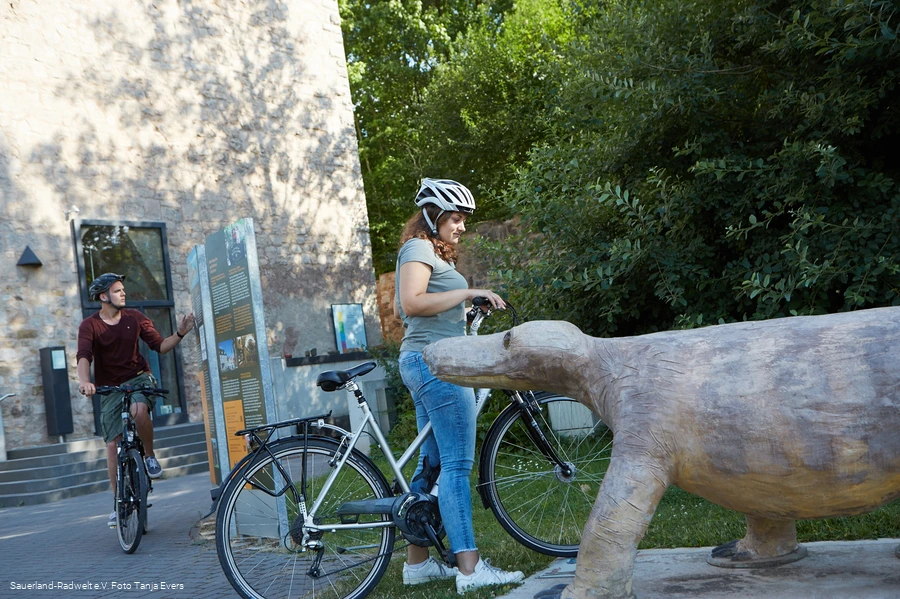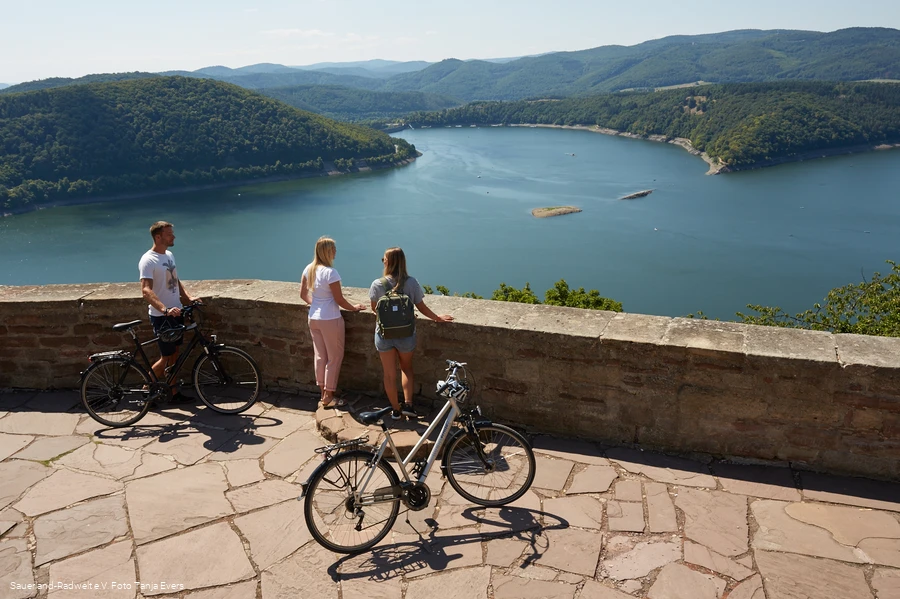The GeoRadroute Ruhr-Eder
A bike ride through the history of the earth
Blogger Udo Telaar spent four days on the Ruhr-Eder GeoRadroute and describes his impressions:
Grain sways in the wind. Cows graze on lush green meadows. And I breathe in the fresh air deeply. For a few kilometers now, I've been traveling along an old farm track in the Waldeck region. Gravel crunches under my tires, accompanied by the gentle murmur of the Eder.
The river accompanies me on the entire second stage of the GeoRadroute. Sometimes it's close enough to touch. Then again a few meters away. But never out of my field of vision. But the Eder is only one highlight of the GeoRadroute. And it is exactly this versatility that makes the bike route so appealing to me.
In the past I have only been to the region for skiing and mountain biking. (More info about sportive cycling on www.bike-arena.de) But some time ago I discovered the border region of North Rhine-Westphalia and Hessen also as a vacation destination for cycling tours of several days. Of course I knew the famous RuhrtalRadweg and I had also heard about the Eder- and Diemel-Radweg. The GeoRadroute, however, was new to me. After I got to know it, I can tell you: It does not have to shy away from the comparison with the well-known bike routes.
The entire cycle path is designed as a circular route and connects the Sauerland with the Waldeck region over 210 kilometers. I cycled from Willingen in four stages via Waldeck, Frankenberg and Winterberg back to Willingen. Before I provide you in the coming days with detailed information on the individual stages, I present you here first a few general facts and special highlights. Because the GeoRadroute Ruhr-Eder is anything but a normal bike path.
If you are on the GeoRadroute, you can literally "cycle through the history of the earth". Everywhere along the route there are stations that provide concentrated information on the geology of the Sauerland and the Waldeck region. Did you know that gold was mined here in the Middle Ages? That was news to me, so I soaked up the information along the route with great enthusiasm. My stop at the GrenzWelten Geopark was also exciting: Because here you can find relics of the mining era as well as spectacular natural monuments. My personal highlight in the Geopark is the Eder reservoir, one of the largest - and for me most beautiful - reservoirs in all of Germany. You can combine your bike tour here wonderfully with a short boat trip - especially on hot days a welcome cooling.
The symbol of the GeoRadroute Ruhr-Eder is a peculiar little animal, which at first glance looks like a mixture of a mammal and a lizard. The so-called "Korbach dachshund" is a procynosuchus - a primordial creature that once lived in the Sauerland and whose remains were found in the Korbach crevice. And so the somewhat misshapen "dachshund" became the logo of the Ruhr-Eder Georadroute.
Conclusion: The route is well signposted overall, but an additional map or a GPS device never hurts on such long routes. On some sections, the GeoRadroute follows other major cycle routes such as the RuhrtalRadweg, the Eder-Radweg or the Ederseebahn-Radweg. The additional signage makes it virtually impossible to get lost here.


